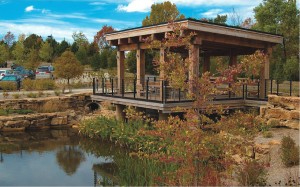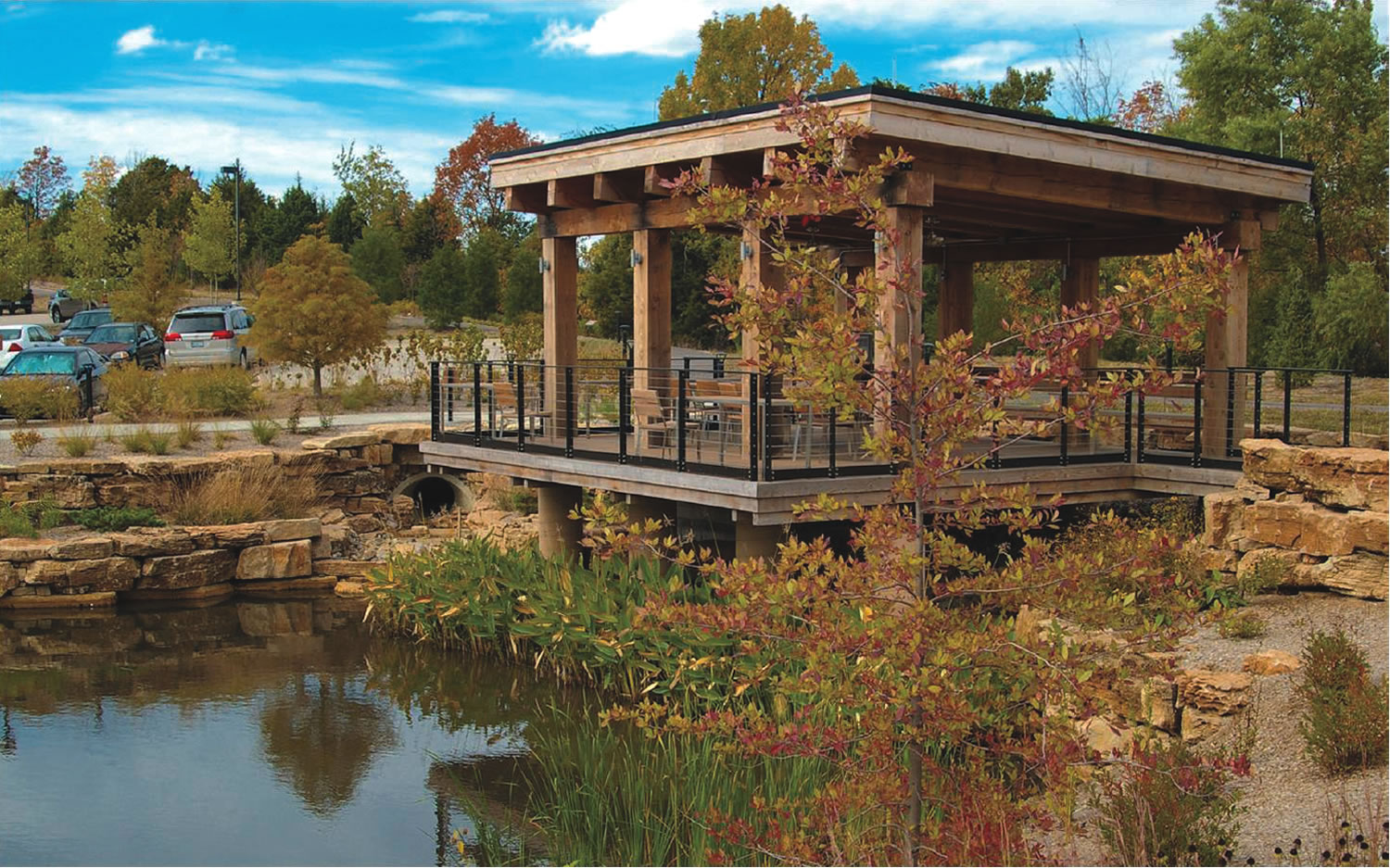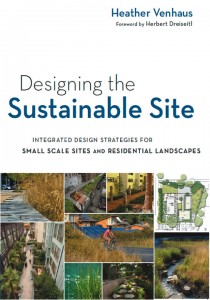
Pilot projects are testing the SITES™ guidelines. The Novus Corporation Headquarters Campus in Missouri was one of three pilots to be certified recently. Features include a detention basin that captures storm water and provides aquatic habitat and a scenic view from a pavilion topped with a vegetated roof. Photo courtesy of SWT Design
Voluntary national guidelines and rating system for landscapes raise the bar on rebuilding America’s green infrastructure from the ground up.
David McDonald and Danielle Pieranunzi
BioCycle March 2012, Vol. 53, No. 3, p. 37
The Sustainable Sites Initiative™ or SITES™ (www.sustainablesites.org) is an interdisciplinary endeavor to create voluntary national guidelines and a rating system for sustainable land design, construction and maintenance practices for landscapes of all types, with or without buildings. The initiative is led by the Lady Bird Johnson Wildflower Center, the American Society of Landscape Architects and the U.S. Botanic Garden (see “Performance Guidelines for Sustainable Sites,” December 2009, for background). The SITES guidelines aim to restore and enhance our urban “green infrastructure” — the web of soil and vegetation that manage storm water, clean and supply our water and air, conserve energy, recycle organic wastes and create livable towns and cities.
SITES is modeled on the US Green Building Council’s LEED™ green building rating system. The SITES guidelines and rating system measure performance of a site or landscape, from predesign site assessment all the way through design, site preparation, construction, and into operations and maintenance. Farmland and wetland preservation, storm water, water conservation, air quality, climate protection, soil, vegetation, habitat and community are all addressed by SITES using an ecosystem services framework. Ecosystem services are natural functions that benefit humans, and so are related to all three components that define sustainability: social equity, ecosystem stewardship and life cycle economic cost and benefits.
Soil And Organics Recycling
Soil and organics recycling are the foundation of a sustainable site. The SITES rating system includes: Preserving farmland and environmentally sensitive soils and vegetation; Establishing Vegetation and Soil Protection Zones to limit construction impact; Creating a Soil Management Plan that delineates how soil will be protected or restored; Restoring construction-impacted soil areas by decompacting and restoring organic matter (mature, stable compost is recommended); and Planning for long-term site operations that include organics recycling and reuse.
Just as the LEED™ rating system has transformed building in America, the SITES guidelines and rating system is poised to affect site and landscape development and become a new standard of design practice, even for projects that don’t pursue certification. After years of work by technical experts around the US, thousand of public comments, and nearly two years of testing with 155 pilot projects, the SITES rating system plans to be complete and open for guiding and certifying projects in early 2013.
Last October, the federal government issued SITES-based recommendations. The White House Council on Environmental Quality released Guidance for Federal Agencies on Sustainable Practices for Designed Landscapes to help agencies meet their goals under Executive Order 13514, which directs federal agencies in sustainable practices. The U.S. Botanic Garden led a federal working group to produce the 32-page guidance on Sustainable Practices for Built Landscapes — basing it on the SITES guidelines and performance benchmarks for sustainable land design, construction and maintenance practices. The new federal guidance pertains to the built environment outside of a building’s walls. Like the SITES, the federal guidance recommends ways to create more sustainable landscapes by focusing on specifics like healthy soil, native vegetation or hydrology. Many cities and businesses are now looking at how they can use SITES too.
More information about the SITES rating system is available in The Sustainable Sites Initiative: Guidelines and Performance Benchmarks at www.sustainablesites.org/report. To learn more about restoring urban green infrastructure, see: “How to Make Organics Recycling ‘Business As Usual’,” (March 2011). For the soil protection and restoration best practices that SITES is built on, see “Don’t Treat Building Soil Like Dirt” (March 2008) and other articles available by searching the BioCycle archives under “Soils for Salmon.”
David McDonald is a biologist at Seattle Public Utilities, chair of the Washington Organic Recycling Council’s Soils for Salmon project, and serves on the Technical Core Committee of the Sustainable Sites Initiative. Danielle Pieranunzi, LEED AP, is Director of the Sustainable Sites Initiative. The authors are presenting at the BioCycle West Coast Conference in the session on on Sustainable Landscapes.











